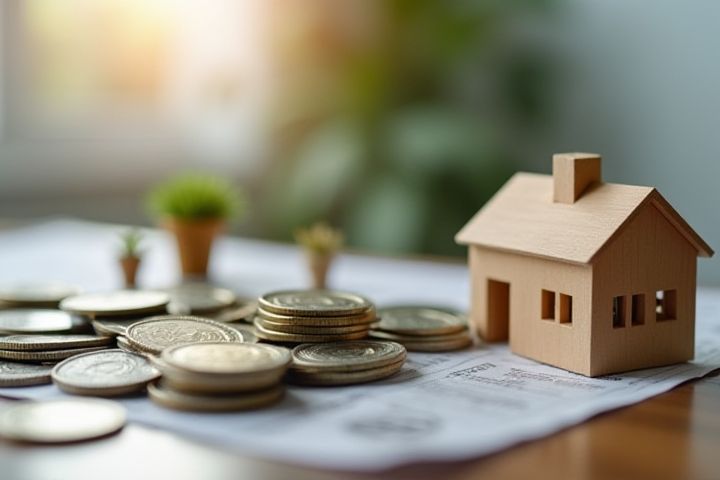
To effectively maintain a house budget, start by tracking all your income and expenses accurately. Utilize budgeting tools or apps to categorize spending, ensuring you understand where your money goes each month. Set clear financial goals, such as saving for emergencies or home repairs, to guide your expenditure decisions. Regularly review and adjust your budget based on any changes in income or unexpected expenses, allowing for flexibility in your financial planning. Lastly, prioritize essential expenses like mortgage or rent, utilities, and groceries to maintain financial stability.
How To Maintain A House Budget
Track all income and expenses
To effectively maintain your house budget, begin by meticulously tracking all income and expenses. Utilize budgeting apps or spreadsheets to log your earnings and expenditures, ensuring every transaction is recorded. This practice allows you to identify patterns in your spending, highlighting areas where you can cut back or allocate funds more efficiently. Aim to review this information monthly, as consistent monitoring can help you stay within your budget and adjust for any unexpected financial changes.
Set realistic financial goals
Set realistic financial goals by first evaluating your monthly income, which might average around $5,000 for most households. Allocate approximately 50% of your income to necessities like housing, food, and utilities while reserving 30% for discretionary spending and 20% for savings and debt repayment. Consider creating a detailed budget plan, using tools like spreadsheets or budgeting apps, to track expenses and identify areas for improvement. Regularly review your spending patterns to adjust your goals and ensure they align with your financial aspirations.
Categorize spending
Categorizing spending is essential for effective house budget management, allowing you to allocate funds to specific areas such as housing, utilities, groceries, and entertainment. For instance, dedicating 30% of your income to housing and 15% to groceries can provide a clear framework for your financial planning. Tracking these categories on a monthly basis can reveal patterns, helping you identify areas for potential savings. You might find that reducing discretionary spending by 10% in one category can significantly free up funds for savings or unexpected expenses.
Create a monthly budget plan
Creating a monthly budget plan starts with identifying all your income sources, such as salaries, side jobs, or investments, to establish a clear financial baseline. Next, categorize your expenses into fixed costs, like rent or mortgage (which typically account for 25-30% of income), and variable costs, including groceries and entertainment, which can total 20-30% of your budget. Allocate a specific percentage--ideally 10-15%--for savings to build an emergency fund or invest for the future. Monitor your spending regularly to ensure you stick to the plan, adjusting categories as needed, and using apps or spreadsheets for enhanced tracking.
Prioritize saving and emergency funds
To maintain a house budget that prioritizes saving and emergency funds, allocate at least 20% of your monthly income towards these savings goals. Start by creating a detailed budget that outlines all your expenses--fixed costs like mortgage or rent, utilities, and variable costs such as groceries. Aim to build an emergency fund covering 3 to 6 months of living expenses, which should be funded consistently every month, even if it's a small amount. Use budgeting apps or spreadsheets to track your progress, ensuring you stay on target with your savings plan.
Monitor and adjust budget regularly
To effectively maintain a house budget, monitor your expenses weekly to ensure they align with your financial goals. Review all categories, such as utilities, groceries, and entertainment, to identify areas where you may be overspending. Adjust your budget monthly based on actual spending patterns, reflecting any changes in income or unforeseen costs. By consistently tracking and modifying your budget, you can achieve more accurate financial planning and avoid unnecessary financial stress.
Use budgeting tools and apps
Utilizing budgeting tools and apps can significantly enhance your ability to manage a household budget effectively. These digital solutions often allow you to input income, track expenses, and categorize spending in real-time, making it easier to visualize where your money goes. For example, apps like Mint or You Need A Budget (YNAB) can provide insights into your financial habits and help you set specific savings goals, improving overall financial health. On average, households using budgeting apps report saving 20% more each month compared to those who do not; this statistic emphasizes the value of integrating technology into personal finance management.
Limit discretionary spending
To effectively limit discretionary spending, create a detailed monthly budget that categorizes your expenses. Track your discretionary spending, which may include dining out, entertainment, or luxury items, and set specific dollar limits for each category. Aim to reduce discretionary expenses by 20-30% compared to previous months; this can add substantial savings over time. You can use budgeting apps or spreadsheets to monitor your progress and stay motivated while keeping your overall financial goals in check.
Plan for irregular expenses
To maintain a house budget effectively, allocate at least 10-15% of your income for irregular expenses such as home repairs, appliance replacements, or seasonal maintenance. Consider creating a dedicated savings account to set aside these funds each month, ensuring you have a financial cushion when unexpected costs arise. Track your irregular expenses over time to identify patterns and adjust your savings plan accordingly. By preparing for these non-recurring costs, you can avoid major financial setbacks and keep your overall budget on track.
Regularly review financial statements
Regularly reviewing your financial statements is essential for effective house budget management. Aim to analyze your expenses and income at least once a month to identify spending patterns and potential savings; this can reveal areas where you may be overspending. Utilize tools like spreadsheet software or budgeting apps that help you visualize your financial data, allowing you to make informed decisions. By tracking your finances consistently, you'll ensure that your budget remains aligned with your financial goals and adapt quickly to any changes in your financial situation.
